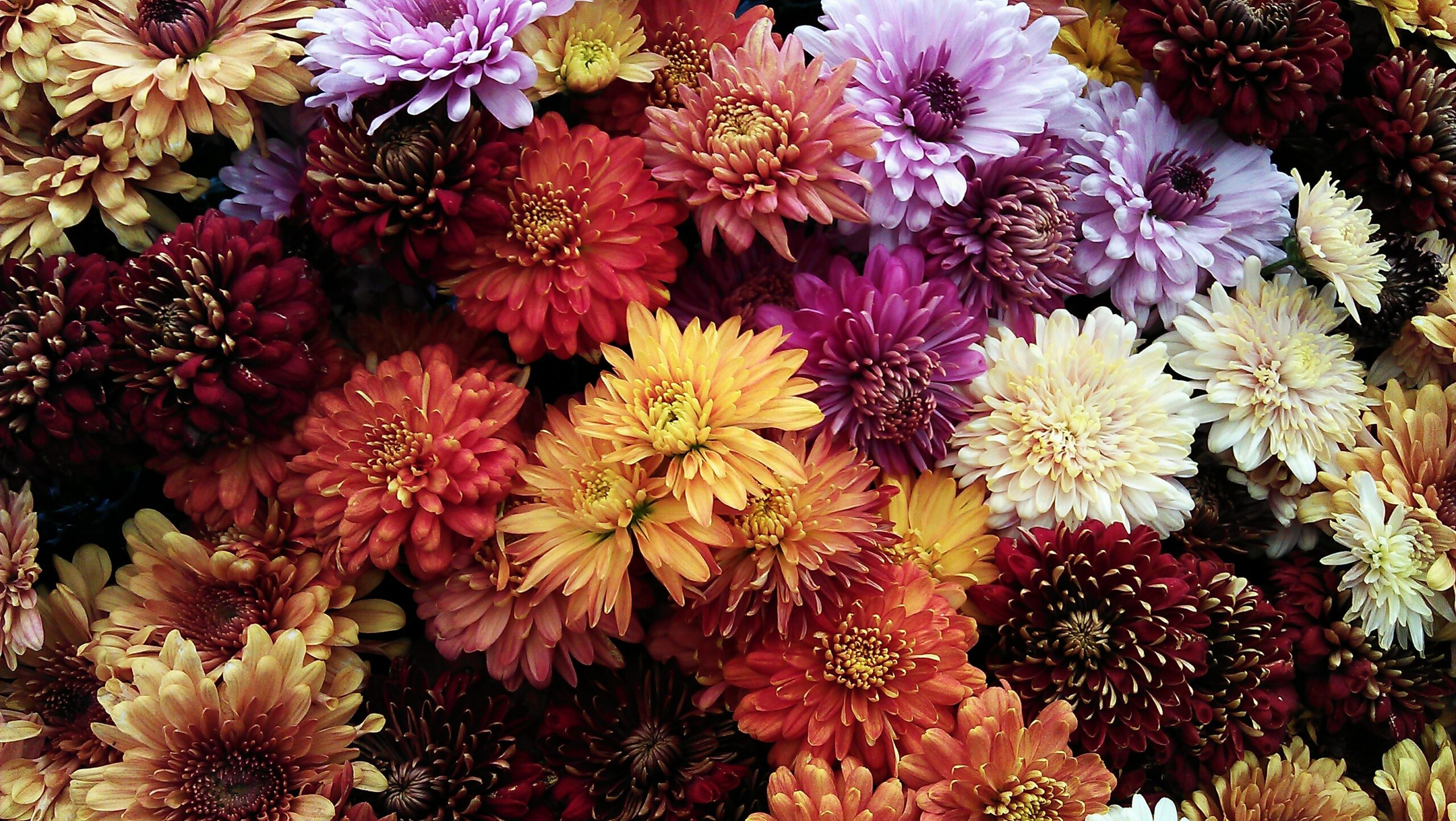The Hort Report: Mums need to be planted in spring to ensure they will survive year after year

The fall weather is really in full swing now. With the daylight hours getting shorter each day and the nights getting cooler, many of your vegetables and flowers have stopped producing.
Laura and I are still watering flowers, tomatoes and green beans. I like seeing how long each fall we can have fresh vegetables and new flowers coming on. We will continue doing this until the first hard freeze.
Many of you have been seeing and buying mums the past few weeks. Mums are a flowering plant that is one of the last blooming flowering plants each year. That is one of the reasons so many people like to have mums around their homes during the fall season.
Mums are a perennial plant that can survive from one year to the next, but the biggest problem is that to do this, you need to be planting mums in the spring of the year to ensure that they will survive year after year.
You can try and plant them in the fall. Laura and I have done this in the past and had decent luck, but sometimes it doesn’t work either. You just need to spend more time and work on making sure they have the best chance to survive to next spring.
Mums are a very hardy type of perennial plant. The problem we have with many types of mums sold in garden centers, local flower shops and local stores are considered and treated as annuals. They are not a true hardy mum that are bred to handle cold weather like we have in this part of the country. Many times people don’t realize this or think about it. Try to buy mums that are bred for zone 4 or colder.
Many of them are already in full bloom when you are seeing them at the store. Once they are starting to bloom, they are reaching their peak. If you get them in full bloom, they are starting to decline in growing. So when picking out mums to buy to take home, pick ones that are not blooming yet or have very few blooms.
Many of you will buy the mums and leave them in the pots you bought them in, not thinking about planting them in the ground. It is very easy to move the pots around. Sometimes you are going to be planting them into the ground.
Be thinking about how many blooms they have on them. Also you don’t need to be planting them past the middle of October. Most mums at this time of year will be past their growing stage, and it will be difficult for them to be putting any energy into growing roots and help them survive the winter weather that we have around this part of the country.
This is a big reason why you need to plant mums in the spring of the year if you are wanting to get them to grow year to year as a perennial. In the spring, they will be able to get a good set of roots growing too.
If you want to plant the mums you have purchased or receive this fall, here are a few things you can do to help them survive the winter weather.
Don’t prune any of the old dead leaves and blooms off the mums you want to plant outside. This will help to protect the mum from the hard winter weather and temperatures. People will prune off the dead leaves and blooms to help make the mum look better, but don’t do it.
When you do plant your mums, make sure the hole is bigger than you need it to be. I like to fill the hole with a mixture of Garden Magic, Pro-Mix BX and soil from the hole. This will help give the roots a place to grow and expand come next spring once the weather warms up.
Make sure you water the mum into the soil mix several times. Let the water soak down into the mix. This will help the soil get in around the roots better. This will help to protect the roots so they won’t die in the coming months.
Make sure you put down a good thick layer of 4-6 inches of mulch. This is very important as it will help keep the cold air from getting down into the soil, thus killing the roots and killing the mum plant this winter.
Make sure to you keep the mulch moist until the first hard freeze. After this, just check to see if you notice the soil starting to crack and open up, thus letting cold air down into the ground. You might need to add more mulch too.
One other thing Laura and I have done is the past is take the mums we want to plant outside somewhere and just over winter them inside. This isn’t as difficult as you might think.
When we do this, we make sure to water the mum in the pot they are in several times, making sure the soil is full of water. We leave them outside for a few cold nights to help get all the insects off them, then we prune them back and put some more soil into the pots. Then we water them in again, making sure the soil in the pots are full of water.
Once we get them moved inside, we put them in our back porch mudroom where we keep the temperature about 50 degrees. We have other plants out there, checking the moisture in the pots weekly, watering when we need to.
In the spring after the last chance of frost, we will remove all the plants, looking for a place to plant some of them in the ground for the new year. We will take cuttings off others to start new plants.
I have had people ask about transplanting perennials now. First, here is something to think about when you are thinking about transplanting now.
If you have a spring or early summer flowering perennial, you want to be transplanting them in the fall. Make sure you get them transplanted at least 6 weeks before the first hard freeze.
When transplanting, make sure to dig up as much of the plant roots you want to transplant as possible. You can then take out any old and dead parts of the plant. You can divide the plant if you need to.
Then you need to then dig a hole about twice as big as the plant you are putting into the hole. Put a mix of Garden Magic, Pro-Mix BX and soil from the hole. Sometimes I will put organic matter into the mix.
Put some of the mix into the hole, making a small hill in the bottom of the hole, then place the plants roots on top of the hill. Start to add more mix into the hole surrounding the roots. Once you get the hole about ¾ full of mix, start to water the plant into the hole, making sure to allow the soil and water to get mix in around the roots of the plant.
Allow the water to settle in around the roots for a few minutes, then add in more mix. Fill the hole to the top of the ground, then add more water. Make sure you add more mix if the water causes the soil to settle down more into the hole, then refill the hole and water again.
The more soil mix and water you can get down into the hole surrounding the roots, the better chance your plant has on surviving the coming winter.
You might want to add good organic matter or leaves and grass clippings. Add about 4-6 inches of mulch to help seal up all the cracks in the soil. This will help keep all the cold air from getting down into the root system. If you keep the roots warm, you will keep the plant alive for the next year’s growing season.
You can be transplanting many types of perennials in the coming days. You can even transplant strawberries if you can make sure to get the roots in soil and protected for the coming winter weather.
If you have any questions please let me know. I really appreciate them and look forward to visiting with you about them. You can call me at 573-588-2040 at Shelby County Implement in Shelbina, Mo. Better yet, just come out and see me. I always enjoy just having someone stop me any time they see me and ask me a question. You can also email me at sci63468@hotmail.com
In the coming days, you will have time to do several yard jobs outside. I will be talking more about getting your yard, garden and flowerbeds ready for winter in a future Hort Report. We have several weeks left to do this.
Enjoy the weather and all the enjoyment you have been getting from your garden, flowerbeds and yard.

Pat Greenwell is the owner of Shelby County Implement in Shelbina, Mo. He was a high school agriculture teacher for 11 years. He has taught adult vocational agriculture since 1987. He also is a research assistant at the Truman State University Ag Department Farm.
Miss Clipping Out Stories to Save for Later?
Click the Purchase Story button below to order a print of this story. We will print it for you on matte photo paper to keep forever.

